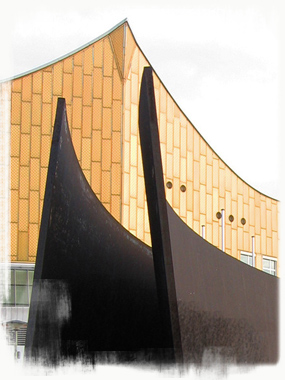

A giant face stared out at us from the wall of the building. In a city full of graffiti, the work was stunning for the quality of its portraiture.
Excited, I snapped shots of it and noted the name of the street which it faced.
Online research revealed the work to be that of the remarkable urban artist Vhils, born Alexandre Farto.
The work also turned out to be an appealing and effective example of commercial graffiti. [Here’s a shout-out to Berlin street art aficionado David Yates @ andBerlin for being the spool from which this discovery unwound.]
Vhils’ portrait was one of four in different parts of the city. Part of his “aesthetics of vandalism” oeuvre, they are products of his trademark carving technique which combines drilling, plastering and blasting the surfaces of walls.
This technique is diametrically opposite to that used by ‘traditional’ graffiti artists who create on walls using spray paint or stencils. Instead, Vhils’ work is etched into walls.
It is a stony beauty fashioned out of contradictions: exposing (parts of the wall behind the paint) to cover (the entire facade with art), corroding to create, exploding to embed. Likewise, contradiction is embodied in his subject choices – individuals being celebrated in the anonymous and faceless space that is a city.
Levi’s and ad agency Wieden+Kennedy Amsterdam saw this and roped the Portuguese artist into a 2009 campaign called ‘Go Forth’, which focussed on pioneers and their spirit.
In Berlin, this resulted in the production of four portraits of local pioneers on city walls.
The use of street art and street artists for commercial purposes is controversial for many reasons. At base, commercialism contravenes the essence of the art form, which is illicit and illegal, even anarchic. Many artists use graffiti for activism and subversion, including anti-capitalism.
Conversely, ad campaigns that embrace the illegality of street art irk hostile authorities and communities, further solidifying opposition to street art.
Still, having been used for advertising since the 1980s, street art continues to be thus employed, particularly with the entrenched nature of this genre within urban landscapes and growing numbers of street artists step-laddering exposure from commercial collaborations to fame.
In the case of the Vhils portraits, long after the campaign was over, the art prevailed, a continued honouring of these individuals and Vhils’ genius. In my case, stumbling upon the first mural made me want to go in search of the other three.


In the process, I ended up discovering sections of the city to which I would not have otherwise ventured.
The portrait that started it all was that of Sven Marquadt, photographer and celebrity bouncer at Berlin’s uber-trendy Berghain techno club. The work was located in the gay-friendly Kiez of Nellendorfplatz, and it was whilst walking around the area that we encountered it.
Next, I decided to track down the portrait of community organiser and youth worker Fadi Saad; the former gang member was also a national spokesman for integration. His mural was in a disused railway workshop, the RAW-Gelände, a fascinating hotbed of street art.
Meanwhile, one half of the street art and performance art pair Various & Gould was featured in the midst of GDR-era buildings by the river Spree. The surroundings were again intriguing for the art on their walls.


As for the final portrait, I was sure I had tracked down and photographed it. It was that of Joe Hatchiban, originator of the Bearpit Karaoke at the Mauerpark. But I appear to have no photographic record of it; I am determined to get it when I next return to Berlin.
All this is to say that I have become a fan of Vhils. His stamping of humanity on the built environment is a thought-provoking engagement of urban physicality and sensibilities.
As my eyes roamed over the immense stone visages and met those fixed gazes, it struck me that like the crumbling structures, I too was bound by the same inescapable destiny. ω
Links:
Vhils’ homepage has information about him and his latest work; ‘Wired‘ has an interesting interview with him about his technique and philosophy.
The ‘Go Forth’ ad campaign featuring Vhils, by Levi’s and ad agency Wieden+Kennedy Amsterdam, is featured in this video.
Check out the personalities in the wall portraits: Sven Marquadt, Fadi Saad, Various & Gould and Joe Hatchiban.
My other stories on the pursuit of the portrait of these personalities are here:
>> RAW Art (Fadi Saad)
>> Power Lines (Various & Gould)
>> Vhils Rebooted (Joe Hatchiban)
Experienced: 07.10.2012 || Recounted: 19.08.2014
If you see this after your page is loaded completely, leafletJS files are missing.



